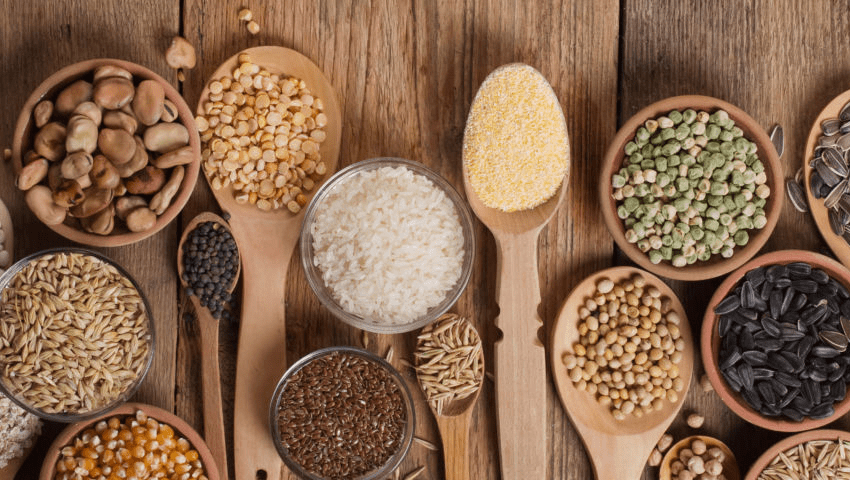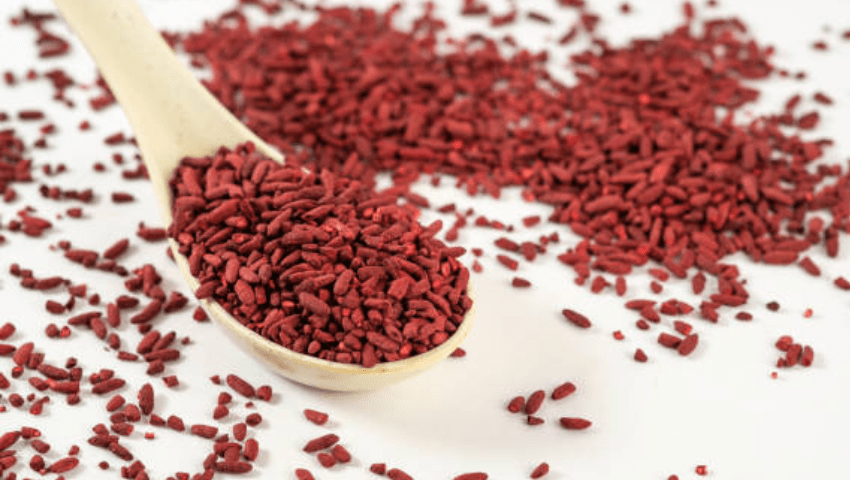
Table of Contents
Toggle#6. Whole-grain bread.
Whole-grain bread. Just three servings reduce the risk of stroke by 20%. It is also worth including other whole-grain foods in the diet, especially those containing oats and barley, as they are excellent for cholesterol.
Learn about the link between whole-grain bread and improved cholesterol levels. A must-read for health enthusiasts.
In the pursuit of a healthy lifestyle, we often find ourselves exploring various dietary options that promise to boost our well-being. One such option that has gained significant attention is whole-grain bread. This seemingly humble staple has been making waves, with research indicating that just three servings of whole-grain bread can lead to a remarkable 20% reduction in the risk of stroke. Beyond this exciting news, the inclusion of other whole-grain foods in the diet, particularly those containing oats and barley, can contribute to improved cholesterol levels, making them essential for maintaining cardiovascular health.
The Marvel of Whole Grains
Whole-grain bread, a true marvel of nutrition, is packed with dietary fiber, vitamins, and minerals that are vital for our overall health. Unlike its refined counterpart, whole-grain bread retains the bran and germ of the grain, ensuring that none of the essential nutrients are stripped away during processing. This is what makes it a powerful ally in the battle against high cholesterol levels.
Understanding Cholesterol
Before delving into the specifics of how whole-grain bread affects cholesterol, let’s understand the concept of cholesterol itself. Cholesterol is a waxy substance found in our blood, and it plays a crucial role in building healthy cells. However, imbalances in cholesterol levels, especially elevated levels of LDL cholesterol (often referred to as “bad” cholesterol), can lead to a host of cardiovascular issues.
Discover the Top 10 Cholesterol-Lowering Foods:

Interesting Fact
Did you know that whole-grain bread isn't just a delightful treat for your taste buds, but also a powerful ally in the battle against imbalanced cholesterol levels? A study conducted by renowned nutritionists revealed that individuals who included whole-grain bread in their daily diet experienced a significant drop in their LDL cholesterol levels within just a few weeks. This tantalizing titbit of information showcases the rapid impact that a small dietary adjustment can have on your cholesterol profile.
The Role of Whole-Grain Bread
Whole-grain bread contains substantial amounts of dietary fiber. This fiber acts as a sponge in the digestive system, soaking up excess cholesterol and preventing its absorption into the bloodstream. As a result, LDL cholesterol levels decrease, reducing the risk of heart diseases such as stroke and heart attacks.
Oats and Barley: Cholesterol’s Natural Enemies
Oats and barley deserve a special mention in the fight against high cholesterol. These grains are rich in beta-glucans, a type of soluble fiber that has been shown to actively lower LDL cholesterol levels. Regular consumption of oats and barley can contribute to a healthier lipid profile and a reduced risk of heart problems.
Useful Information
When it comes to managing your cholesterol levels, it's not just about what you eat but how you prepare your meals. Opting for whole-grain bread as the base for your sandwiches can make a substantial difference. The combination of fiber and nutrients in whole-grain bread not only supports healthier cholesterol levels but also helps regulate your blood sugar, giving you sustained energy throughout the day. So, next time you're crafting a sandwich, remember that your choice of bread can be a game-changer for your cardiovascular health.
Embracing a Heart-Healthy Diet
Incorporating whole-grain bread, oats, and barley into your daily meals can be a simple yet effective step toward better heart health. These foods not only help lower LDL cholesterol but also support the increase of HDL cholesterol (often referred to as “good” cholesterol). HDL cholesterol acts as a scavenger, collecting excess cholesterol from the bloodstream and delivering it to the liver for disposal.
The Red Yeast Rice Connection
Another notable player in the realm of cholesterol management is red yeast rice. This traditional Chinese ingredient contains naturally occurring compounds that have been found to have cholesterol-lowering properties. It’s often considered a natural alternative for those looking to manage their cholesterol levels without solely relying on medication.

Exploring a Palette of Whole Grains
Beyond whole-grain bread, oats, and barley, there’s a diverse range of whole grains that can contribute to a heart-healthy diet. Quinoa, brown rice, and whole-grain pasta are excellent options that can add both nutritional value and variety to your meals.
Conclusion: Embracing Heart Health Through Whole Grains and Balanced Cholesterol Levels.
In a world where the pursuit of wellness often intersects with the complexities of modern lifestyles, the significance of maintaining optimal cholesterol levels cannot be overstated. As we’ve delved into the realm of whole-grain bread and its remarkable impact on cholesterol levels, a clear path toward a healthier heart and a more vibrant life emerges.
The journey we’ve undertaken throughout this article has unveiled the profound connection between whole grains and cholesterol management. With just three servings of whole-grain bread, the risk of stroke can be reduced by an astonishing 20%, a testament to the potent influence of a simple dietary choice. But whole-grain bread is not alone in this endeavor; its allies, oats and barley, further reinforce the battle against high cholesterol levels. These grains, with their rich reserves of soluble fiber, act as guardians, intercepting excess cholesterol and guiding it away from the delicate pathways of our circulatory system.
By adopting a diet that incorporates whole-grain bread, oats, and barley, individuals hold the power to tip the scales in favor of balanced cholesterol levels. LDL cholesterol, often dubbed the “bad” cholesterol, finds itself under siege as the soluble fiber in these grains forms a barrier against its harmful effects. Simultaneously, the levels of HDL cholesterol, the “good” cholesterol, rise, sweeping away the remnants of cholesterol that may otherwise lead to arterial plaque formation.
Did You Know?
While whole-grain bread takes the spotlight in the realm of heart-healthy foods, its counterparts, oats and barley, shine just as brightly. These unsung heroes are brimming with beta-glucans, a type of soluble fiber that works wonders for your cholesterol levels. Beta-glucans form a gel-like substance in your digestive tract, which binds to excess cholesterol and escorts it out of your body. So, that morning bowl of oatmeal isn't just a comforting breakfast; it's also a cholesterol-busting elixir.
As we conclude our exploration, it’s essential to recognize the synergy that exists between whole grains and the pursuit of heart health. The ripple effects of balanced cholesterol levels extend far beyond reducing the risk of strokes; they encompass a holistic approach to well-being. By making whole-grain bread, oats, and barley staples of our diets, we not only nurture our hearts but also lay the foundation for robust cardiovascular health.
In the grand tapestry of health and vitality, the threads of nutrition, exercise, and mindful living weave together to create a harmonious existence. Among these threads, the role of whole grains stands out prominently, offering a beacon of hope and a tangible pathway toward managing cholesterol levels. It’s a choice that speaks volumes, a choice that declares our commitment to a life brimming with energy, vitality, and well-being.
In this modern era, where the cacophony of fast-paced living often overshadows the whispers of self-care, let us heed the wisdom of whole grains. Let us embrace the simple yet profound transformation they offer—the transformation of our cholesterol levels and, by extension, our hearts. As we take the final steps of this enlightening journey, may our hearts beat to the rhythm of health, and may our cholesterol levels find harmony in the embrace of whole-grain goodness.
Pro Tip
Are you looking to unleash the full potential of whole grains in your quest for balanced cholesterol levels? Here's a pro tip: combine them with other heart-healthy ingredients. Top your morning oatmeal with a handful of walnuts, which are rich in omega-3 fatty acids. These healthy fats not only support your cholesterol profile but also contribute to overall heart health. The synergy between whole grains and omega-3s creates a nutritional powerhouse that can make a remarkable impact on your well-being.
FAQs
Q1: How much whole-grain bread should I consume daily for maximum benefits?
A1: Aim for at least three servings of whole-grain bread per day to reap its cholesterol-lowering advantages.
Q2: Can I replace medication with red yeast rice for managing cholesterol?
A2: While red yeast rice may help lower cholesterol, it’s important to consult a healthcare professional before making any changes to your medication regimen.
Q3: Are there any specific foods that complement the effects of whole grains on cholesterol?
A3: Yes, foods rich in omega-3 fatty acids, such as fatty fish, walnuts, and flaxseeds, can further support heart health.
Q4: Is whole-grain bread suitable for individuals with gluten sensitivity?
A4: There are gluten-free options available, but individuals with gluten sensitivity should carefully read labels and choose certified gluten-free products.
Q5: Can children benefit from including whole grains in their diets?
A5: Absolutely. Introducing whole grains early in life can establish healthy eating habits and contribute to long-term heart health.

Q6: Can I still enjoy whole-grain bread if I have gluten sensitivity?
A6: Absolutely, there are gluten-free whole-grain bread options available that cater to individuals with gluten sensitivity.
Q7: What are some delicious ways to incorporate oats and barley into my diet?
A7: You can enjoy oats as oatmeal for breakfast or use barley in soups, stews, and salads for a delightful and heart-healthy culinary experience.
Q8: Are there any other benefits of consuming whole-grain bread besides cholesterol management?
A8: Certainly, whole-grain bread is also a good source of dietary fiber, promoting digestive health and helping with weight management.
Q9: Can children benefit from including whole grains in their diets, and how can I introduce these foods to them?
A9: Yes, children can benefit from whole grains. Try adding whole-grain bread to their sandwiches, offering oat-based cereals, or incorporating whole-grain pasta into their meals.
Q10: Are there other natural ingredients like red yeast rice that can aid in maintaining cholesterol levels?
A10: Indeed, foods rich in omega-3 fatty acids, such as fatty fish (salmon, mackerel), walnuts, and flaxseeds, can complement your efforts in managing cholesterol levels effectively.
Food for Thought
The journey to healthier cholesterol levels begins on your plate. Imagine indulging in a warm bowl of soup featuring nutrient-dense barley, or savoring the crunch of whole-grain bread in your avocado toast. These simple, pleasurable choices are like little love notes to your heart. As you relish each bite, you're nourishing your body with the tools it needs to maintain optimal cholesterol levels and safeguard your cardiovascular health for years to come. So, the next time you break bread, remember that you're not just enjoying a delicious meal – you're taking a stand for your cholesterol level and your well-being.







